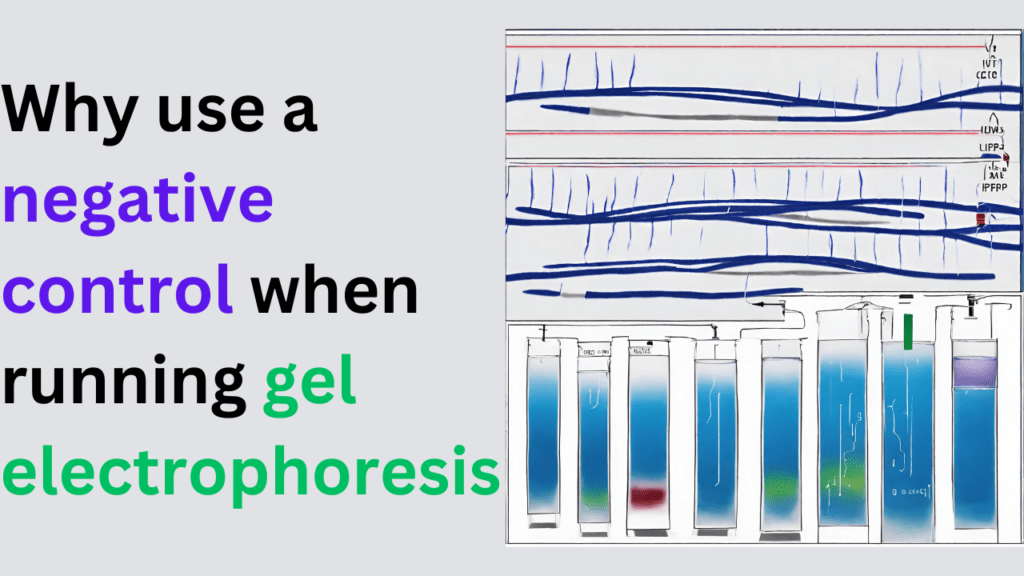Here you will learn about “Why use a negative control when running gel electrophoresis”.

Gel electrophoresis is a widely used technique in molecular biology that separates charged molecules, such as DNA, RNA, or proteins, based on their size and charge.
A negative control is a sample or reaction that is expected to show no response or a minimal response under the experimental conditions.
In gel electrophoresis, the purpose of negative control is:
- Confirmation of System Functionality:
Gel electrophoresis apparatus, such as power supplies and gel tanks, can experience technical issues. Including a negative control allows researchers to confirm that the entire system is functioning as expected and that any observed outcomes are due to the experimental variables rather than technical problems. - Verification of Reagents and Conditions:
It involves various reagents, such as buffer solutions, dyes, and enzymes. The negative control ensures that these reagents do not contribute to unintended effects, and it verifies that the experimental conditions are suitable for the intended separation of molecules. - Detection of Contamination:
Contamination can compromise the integrity of experimental results. The negative control is particularly useful for detecting contamination, whether it be from external sources or cross-contamination between samples during preparation or loading onto the gel. - Baseline for Result Interpretation:
The negative control provides a baseline against which experimental samples can be compared. Any bands or signals observed in experimental lanes should be compared to the background and noise levels established by the negative control, helping researchers distinguish true signals from random variations. - Quality Control for Nucleic Acid Extraction:
In experiments involving nucleic acids, such as DNA or RNA electrophoresis, the negative control is crucial for evaluating the quality of the nucleic acid extraction process.- It ensures that any observed bands in experimental samples are not artifacts of poor-quality nucleic acids.
- Minimization of False Positives:
Researchers can minimize the likelihood of false-positive results by it. False positives can arise from a variety of sources, and the negative control helps identify and eliminate such spurious signals.
1 thought on “Why use a negative control when running gel electrophoresis”